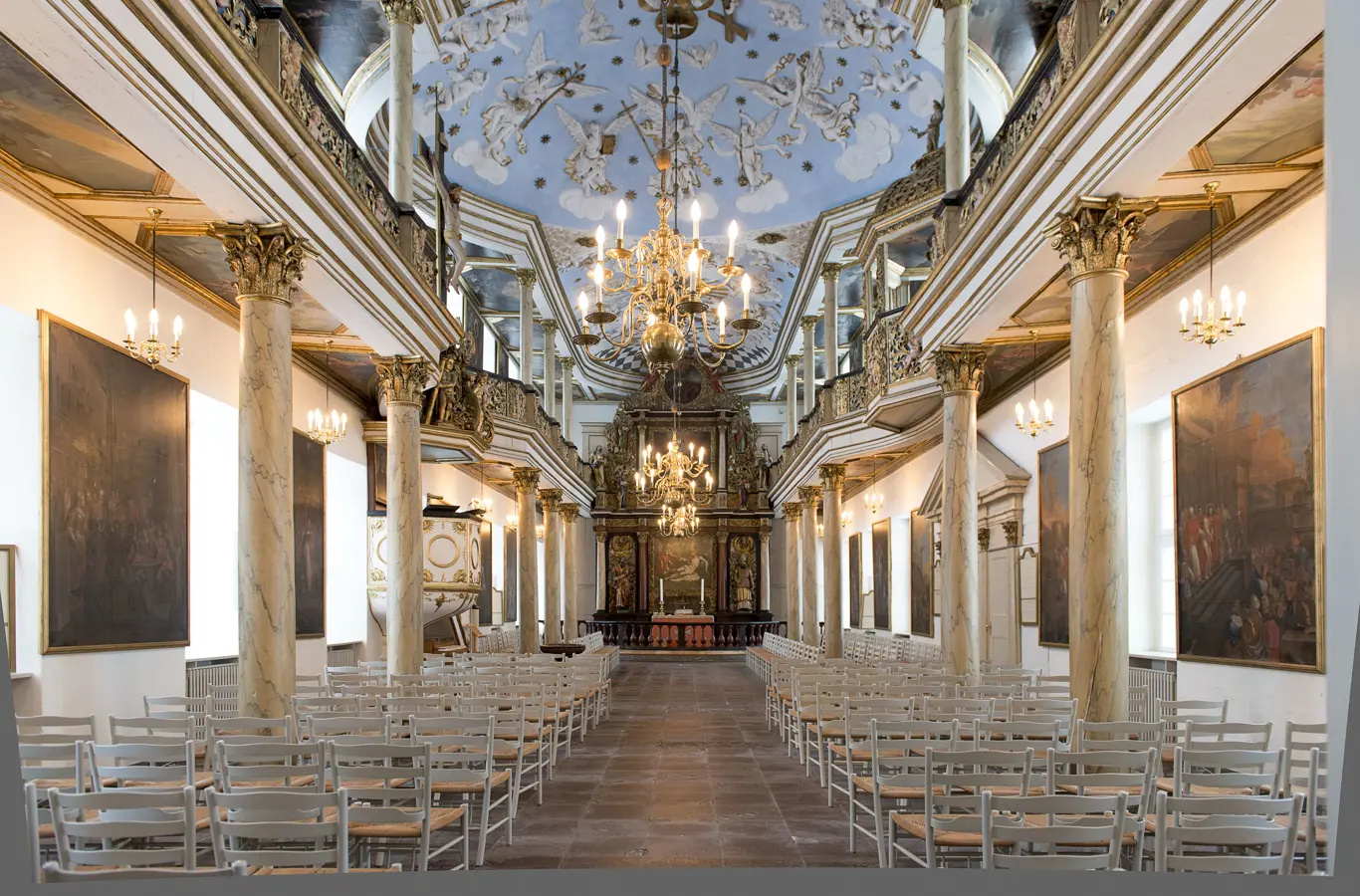
In 1935, Graasten Palace was handed over to be the summer residence for Frederik IX and Queen Ingrid, and the tradition of using it during the summe has continued since then.
The first Graasten Palace was a small hunting lodge built in the middle of the 1500s. After it burned down in 1603, a new palace was built approximately where the south wing of the current palace is located.
Chancellor Count Frederik Ahlefeldt, who was the owner of Graasten Palace from 1662 – 82, and his son built a huge baroque palace shortly before the beginning of the 1700’s. It, too, burned down in 1757. Only the palace chapel and a few pavilions remained. The current palace thus dates back to 1759, when a new south wing was built, and to 1842, when the central building was added. At the beginning of the last century, considerable renovations were made. The Dukes of Augustenborg owned Graasten Palace from 1725 to 1852, when it was acquired by Frederik VII. After 1864, the palace was again occupied by the Augustenborg family.
After the Reunification in 1920, the Danish state bought the palace, and for a period it was used as a court house, housing for judges and police chiefs, and a library. In 1935, after an extensive restoration, Graasten Palace was handed over to be the summer residence for the then-Crown Prince Couple (later Frederik IX and Queen Ingrid).
Frederik IX and Queen Ingrid spent the summers at Graasten Palace. After Queen Ingrid’s death, the palace passed to HM Queen Margrethe and then to HM The King.
The Palace Garden
Around Graasten Palace lies Graasten Palace Garden, which is open to the public when the royal family is not in residence at the palace.
The palace garden is in romantic style and was created at the end of the 1700s. After the Royal House’s acquisition of the palace in 1939, a reshaping of the garden in English style began at the request of Crown Princess Ingrid. The garden is characterized by open lawns, large sections of bushes, rose and flower beds and a view out to the surrounding lake and forest landscape.
The Palace Church
Graasten Palace Church is among the only preserved buildings from the original Graasten Slot, which burned down in 1757.
The palace church is situated in the palace’s north wing, and dates from the rebuilding of the original palace in the 1700s. Since 1851, the church as served as a parish church.
The church’s interior is decorated with, among other things, a large Baroque altarpiece, which covers the end wall from floor to ceiling. The altarpiece is adorned with sculptures and paintings as well as columns with red and white marbling.
The stucco ceiling is decorated with angels and putti on a light-blue sky background. Graasten Palace Church is also adorned with paintings; 75 of the original 80 paintings are preserved today. Presumably, the paintings can be divided into six different groups (artists/workshops), based on differences in the choice of materials and the painting technique as well as stylistic differences.

The Royal Kitchen Garden
The Royal Kitchen Garden at Graasten Palace opened for the public in 2020. In the kitchen garden, you can follow the course of the year in a working garden that produces fruit and vegetables for the royal dining table.
The Royal Kitchen Garden contains, among other things, a number of herbs, bushes with berries such as blackberries, raspberries and gooseberries, flowers and a forest of fruit trees that grow in trellises. In the kitchen garden, there is also a focus on learning about nature, and it is possible for school classes to receive education about and learn about the route from soil to table.
In the gardener building, there is a garden market with café, where you can buy some food and drink. In addition to that, built centrally in the kitchen garden is a new parade house, which is used for disseminating information about care and operation of a sustainable and productive kitchen garden as well as for winter care of the garden’s more delicate plants such as citrus and myrtles.
The Agency for Culture and Palaces is responsible for operation of Graasten Palace Garden and the Royal Kitchen Garden. In the kitchen garden, the agency’s gardeners get help from employees from the social psychiatric program “Væksthuset” in Sønderborg Municipality.







